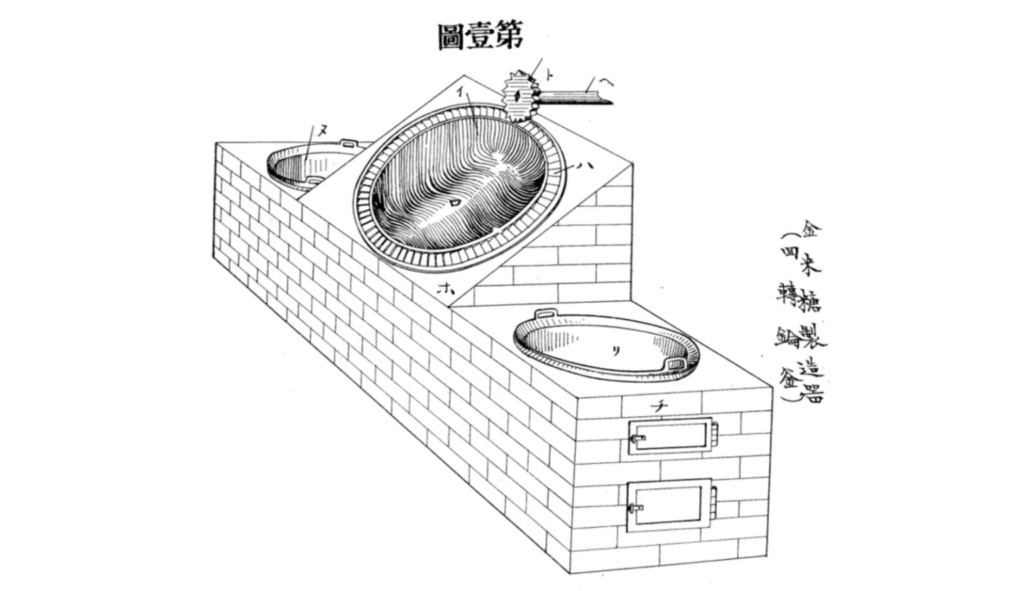
- Introduction: Engineering the Sparkling World of Konpeitō
- What the Patent Drawing Shows
- How the Candy-Forming Process Works
- Benefits for Traditional Candy-Making and Modern Production
- Engineering & Process-Design Considerations
- Patent Attorney’s Thoughts
- Application of the Technology: “Automated Layer-Crystallization Candy Production Platform”
- Final Reflections
Introduction: Engineering the Sparkling World of Konpeitō
Konpeitō, the iconic Japanese star-shaped sugar candy, has always fascinated people with its colorful appearance and crystal-like spikes.
This patent reveals a specialized konpeitō manufacturing apparatus designed to automate and refine the traditional tumbling process, ensuring consistent shape growth, even heating, and precise control of sugar layering.
What the Patent Drawing Shows
The diagrams illustrate a rotating drum-like structure—similar to a traditional pot used in konpeitō making—but enhanced with mechanical refinements.
The apparatus includes a motorized rotational mechanism, adjustable heating elements, and a carefully controlled sugar-coating system that drips syrup or granulated sugar at optimized intervals.
Internal baffles help distribute motion evenly so each candy kernel receives equal exposure to heat and syrup.
The structure is engineered to avoid clumping while promoting the characteristic spike growth that defines konpeitō.
How the Candy-Forming Process Works
The device begins with small seed cores placed inside the rotating drum. As the drum turns, heat warms the seeds uniformly. Syrup or sugar solution is added incrementally in precise pulses, and the rotation continuously tumbles the cores so each receives thin, even layers. Over time, the uneven deposition leads to the formation of konpeitō’s distinctive bumps. The system automates what artisans traditionally perform manually, while retaining the gradual layering essential to achieving the candy’s texture.
Benefits for Traditional Candy-Making and Modern Production
This apparatus modernizes a centuries-old manufacturing technique without sacrificing authenticity.
It ensures consistent shape and size across batches, reduces manual labor, and maintains the delicate aesthetics of traditional konpeitō.
Factories benefit from improved productivity, while small artisanal producers gain a reliable tool capable of delivering uniform quality.
The device also opens the door for new flavor infusions and color-layering techniques that require precise control.
Engineering & Process-Design Considerations
To achieve the perfect star shape, rotation speed must be finely tuned; too fast causes clumping, while too slow prevents spike formation.
Temperature regulation is equally critical—excess heat melts sugar unevenly, while insufficient heat prevents proper crystallization.
The syrup delivery system must provide thin, controlled layers so spikes grow gradually. Materials must be heat-resistant, food-safe, and easy to clean.
In short, the apparatus represents the careful balance of tradition and automation.
Patent Attorney’s Thoughts
Konpeitō grows one layer at a time, like patience made edible.
This invention preserves the craft while elevating precision, showing how technology can honor heritage by helping it shine brighter.
Application of the Technology: “Automated Layer-Crystallization Candy Production Platform”
Purpose
To automate the gradual heating, rotation, and sugar-layering process required for konpeitō formation.
System Components
- Rotating heated drum
- Motorized rotation mechanism
- Precision syrup dispenser
- Internal motion-distribution baffles
- Temperature control unit
Operational Flow
- Load seed cores into drum.
- Begin controlled heating and rotation.
- Apply syrup in timed intervals.
- Allow layers to build through tumbling.
- Continue until desired size and texture are achieved.
Final Reflections
This device reimagines konpeitō production for the modern era—preserving charm while achieving dependable, beautiful results.
Disclaimer: This content is an AI-generated reinterpretation based on a patent drawing.
It is provided for educational and cultural purposes only, and not as legal advice.
↓Related drawing↓




